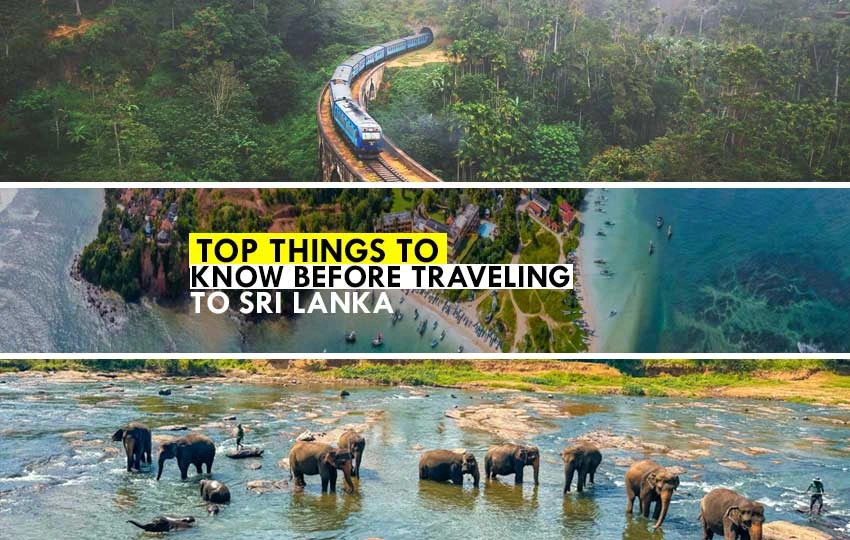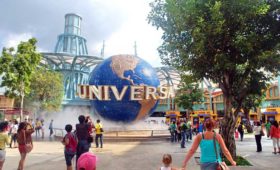Traveling to Sri Lanka means visiting various cultures, historical sites, scenic beauty, and welcoming people. This article will offer key advice and information if you plan a trip to Sri Lanka. Whether you are going for a Sri Lanka honeymoon package, an adventurous tour, or a cultural tour, the beginner should know some standards before setting for the package. In this blog, you will find all you need to know, including the most important tourist destinations and visa information, as well as some precautions and other means of transportation that would enable you to have a smooth ride through this beautiful island.
Table of Contents
Overview
Traveling to Sri Lanka is a fascinating adventure, making it one of Asia’s most colorful destinations. Located in the Indian Ocean, this island country offers a rich history and culture and the seriousness of natural beauty and adventure. Sri Lanka has become one of the most popular tourist destinations in the world due to its vivid cities, beautiful sandy beaches, tea gardens, and historical temples. The country’s rich history can be traced back thousands of years due to its rich civilization and culturally rich cities. If you are keen on Sri Lanka Tour packages that cover all across the country or you prefer to enjoy the natural beauty of this country, then Sri Lanka will not let you down.
Sri Lanka also has a rich and diverse wildlife sanctuary that allows visitors to get up close with leopards and elephants, birdlife, and marine life. These natural resources add to the culture and integrated sceneries, thus making Sri Lanka one of the best tourist destinations in South Asia. Whether you are alone or have Sri Lankan honeymoon tour packages, this place will make your tour most memorable.
Top Tourist Attractions in Sri Lanka
Sri Lanka is an island off India’s southeast coast and is often called “The Pearl of the Indian Ocean.” Historically inclined, nature lover, or beach freak—you name it, this tropical island will not disappoint you. Here is a list of the best places to visit in Sri Lanka and exciting things to do in Sri Lanka that you shouldn’t miss.
1. Sigiriya Rock Fortress
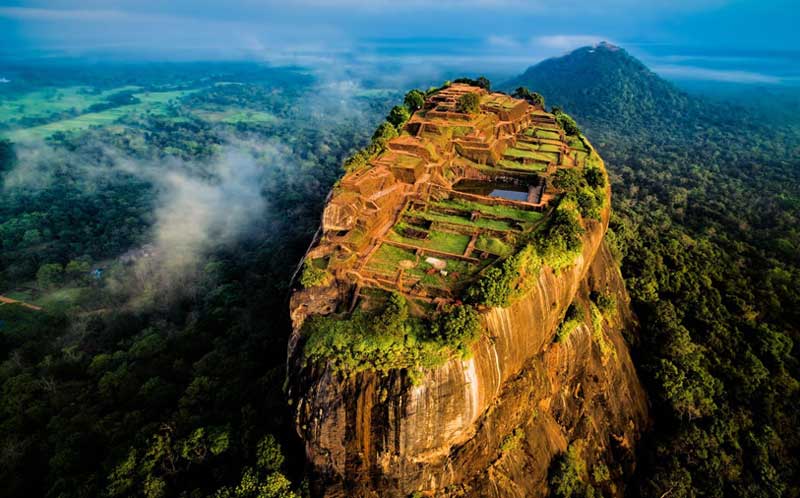
Sigiriya, a World Heritage Site, is a great and famous ancient rock-cutting royal palace built around the 5th century. Lions Rock, or Traditional Great Wall, has very well-maintained paintings, lush green gardens, and a spectacular view from the top. Trekking up Sigiriya is undoubtedly one of the finest things you should do in Sri Lanka, especially for lovers of history and, more so, the adventurous kind.
2. Dambulla Cave Temple
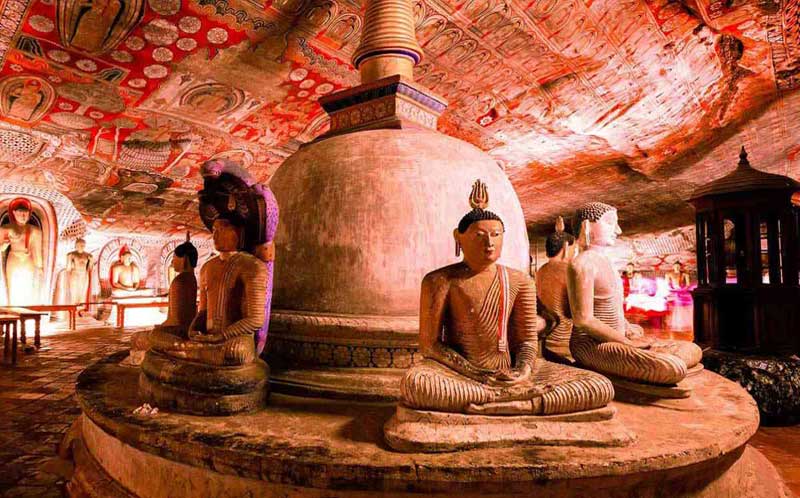
Situated in Central Sri Lanka, the Dambulla cave temple is another UNESCO World Heritage site that tourists cannot miss. It has five temples, which are styled caves with well-articulate Buddhist paintings and sculptures. It is a silent place, quite prayerful, more so if you want to get a feel of the cultural practitioners of the island.
3. Yala National Park
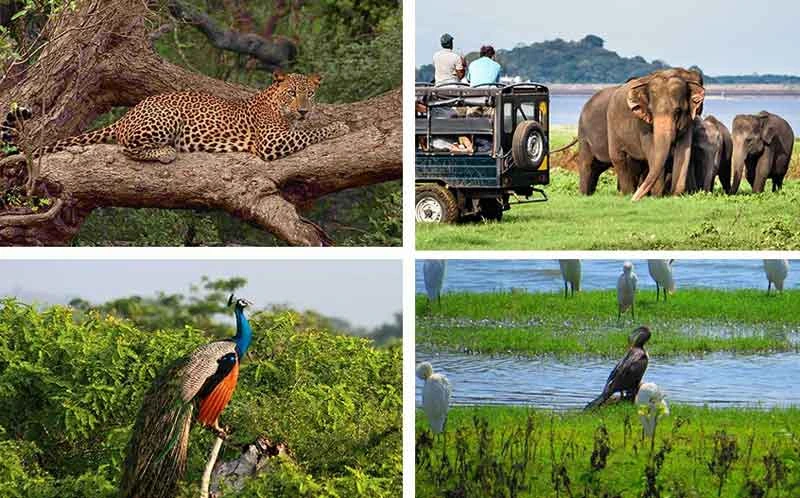
Yala National Park, therefore, is a paradise for lovers of wildlife. Yala provides safari-type requests, especially popular with leopards, elephants, and birding. There are many wonderful things to do in Sri Lanka, including watching wild animals in their natural environment.
4. Ella
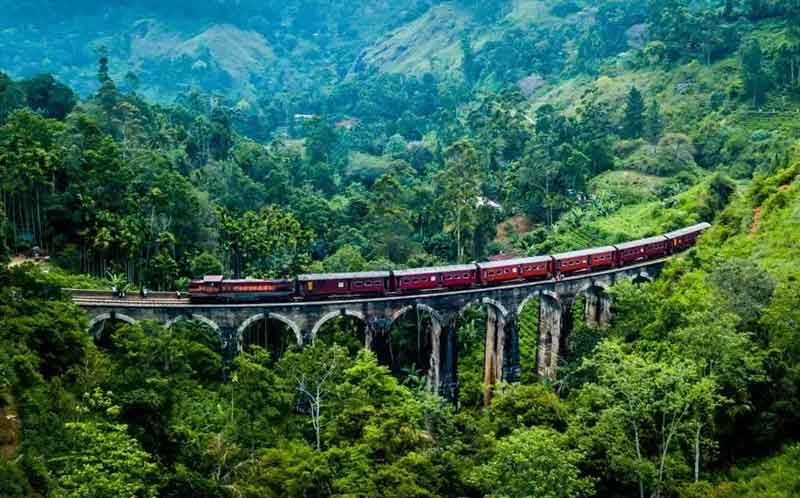
Ella lies in the middle of Sri Lanka, a hilly country with green hills and wonderful mist. Go to Ella Rock, walk to Nine Arch Bridge, or complete a train journey through the beautiful stations among green tea fields. Ella, for sure, is one of the most attractive destinations for nature and adventurous tourists in Sri Lanka.
5. Galle Fort
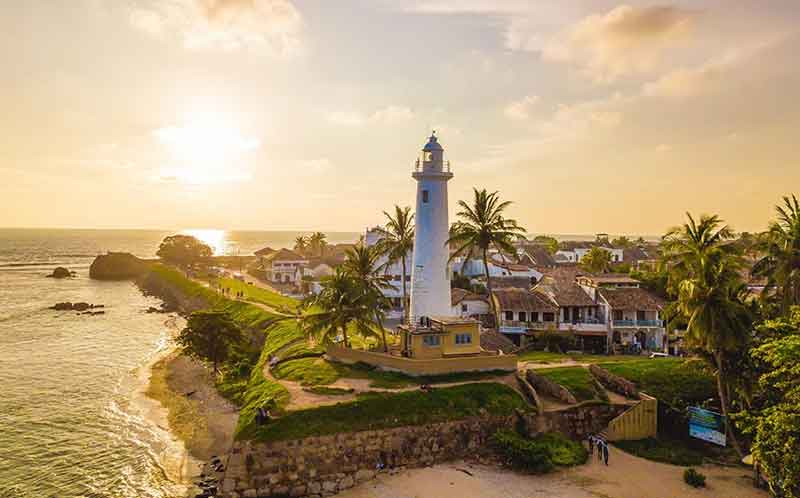
The Galle Fort, named a World Heritage site by UNESCO, is still a remarkably intact colonial-era bastion on the southwest coast. The Portuguese constructed it, which was later enhanced by the Dutch. It is listed as a world heritage site among places with historical importance, beautiful streets, and sea beaches. Walking down the alleys of this city on the broad stone pavements is one of the best things to do in Sri Lanka.
6. Kandy
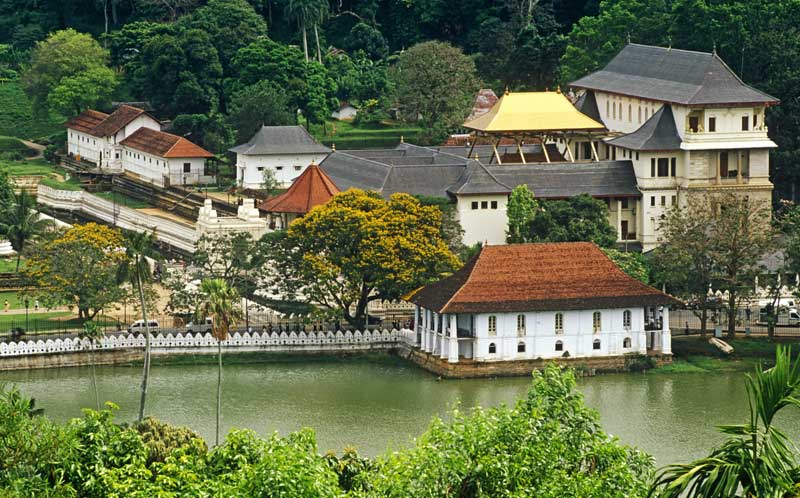
People come here from around the world to pay tribute to the Temple of the Tooth Relic; therefore, Kandy has a rich cultural history. Located amidst the hills and encompassing a calm lake, Kandy is also the starting point of the historic triangle of Sri Lanka. Enjoy the remarkable Kandyan dance show!
7. Nuwara Eliya
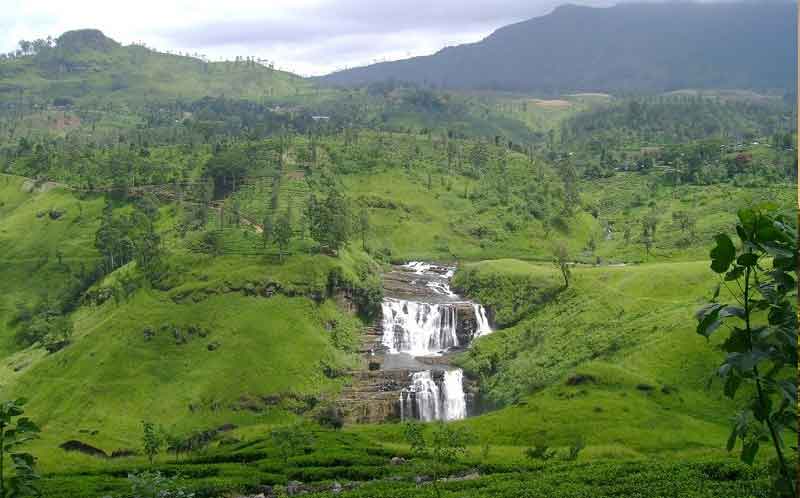
Also known as ‘Little England,’ Nuwara Eliya is a picturesque town that appeals to any visitor because of its beautiful tea gardens, waterfalls, and British past. Go to a tea plantation boat ride on Gregory Lake or Horton Plains National Park. That makes it among the best Honeymoon destinations in Sri Lanka for visitors who wish to relax all through.
8. Mirissa
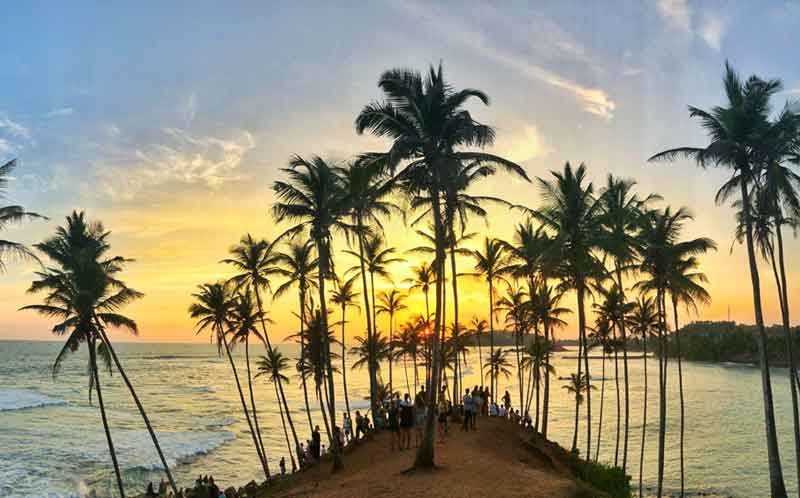
The southern coastal zone of Sri Lanka has some remarkable beaches; one is Mirissa. It is the perfect location for whirling, snorkeling, sunbathing by the sea, and watching whales. If you are a beach lover, there is much enjoyment in doing some of the enjoyable things in Mirissa, Sri Lanka.
3. Visa Requirements
Knowing the visa requirements when traveling to Sri Lanka is essential to help you enter the country hassle-free. Most countries can get an online visa for Sri Lanka, and the process is relatively hassle-free compared to the past. Here’s what you need to know about obtaining a visa for this stunning island nation:
1. Types of Visas:
Electronic Travel Authorization (ETA):
- Almost all visitors, including those for leisure and those on business, require an ETA before entering Sri Lanka. The ETA is issued for a maximum of 30 days but can be renewed for up to six months.
- An applicant can obtain the ETA online by applying it on the website owned by the Sri Lankan government. Approval time is generally short, and the steps involved are well-explained and easy to overcome.
2. Visa on Arrival:
However, if you fail to secure an ETA before arrival, some exceptions exist, such as visas being granted upon arrival at the Bandaranaike International Airport. Nevertheless, you should obtain an ETA in advance to avoid some troubles with receiving it.
3. Transit Visa:
If you are a tourist in Sri Lanka for less than 48 hours, you won’t need a visa. It would be possible, in such circumstances, to get a transit visa for free.
4. Documents Required
- A legal passport with at least six remaining months on your arrival date.
- A confirmed return ticket.
- Evidence that you have enough cash to support yourself while living in the country.
- Reserving a hotel or having an address of living in Sri Lanka.
5. Additional Information
Visa policies change occasionally, so it is advisable to review the guidelines from the Sri Lanka Department of Immigration and Emigration. Appreciating these requirements will make traveling to Sri Lanka less of a problem, leaving you to fully appreciate your vacation.
4. Best Time to Visit
When is the best time to visit Sri Lanka relative to the activities tourists wish to undertake during their excursions? Sri Lanka has a tropical climate, and the temperatures do not differ much from one time of the year to another. Still, some parts of the year are considered appropriate for particular country areas.
- West and South Coasts (November to April): This is believed to be the best time for tourists to visit the west and south coasts of the region since the climate is dry and sunny. It is ideal for any tourist who is passionate about sun, sand, and sea activities.
- Hill Country (December to March): If you are looking forward to the colder climate and beautiful scenery, visiting Hill Country, especially places like Nuwara Eliya or Kandy, during these months would be better.
- East Coast (May to September): Sri Lanka’s east coast is very dry during these months; it’s a good time to visit Trincomalee or Arugam Bay.
The beach weather is ideal for a Sri Lanka honeymoon package between November and April, while the cooler weather is ideal for other activities such as sightseeing.
5. Accommodation Options
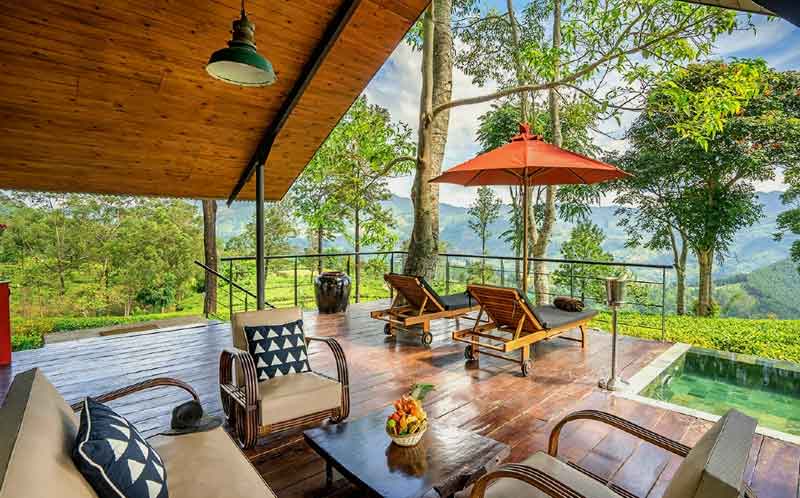
Regarding the type of accommodations, tourists will find anything, from luxury hotels to cheap hostels in Sri Lanka. Depending on your Sri Lanka honeymoon package or trip to Sri Lanka, you can choose from:
Luxury Resorts: To add more glamour to your tour, you can plan to stay in high-end resorts available in Bentota, Mirissa, and Colombo. These resorts provide villas with gorgeous landscapes, including everything from food and drinks to clothes.
Boutique Hotels: Other types of accommodation you can find in cities, such as Kandy, Galle, and Colombo, are boutique hotels that are famous for their approach to guests and the combination of national traditions with contemporary facilities and services.
Guesthouses and Hostels: Backpackers can get cheap accommodations such as guest houses and hostels in nearly all the parts of Sri Lanka where there is tourism, such as Ella and Unawatuna.
Eco-Friendly Stays: Sri Lanka is also equipped with an eco-lodge and nature resort for tourists who prefer to be surrounded by nature without harming the environment of Sri Lanka.
Sri Lanka has all types of accommodations that measure every traveler’s experiences, thus making travelers comfortable and offering many options.
6. Local Currency and Payments
The official currency of Sri Lanka is the LKR, which denotes the Sri Lankan Rupee, abbreviated. If you plan to tour Sri Lanka, having cash with you specifically for little tangible items is wise since some shop owners likely do not accept credit. Colombo and Kandy, for instance, have Automatic Teller Machines, and you can use Foreign exchange from airports, banks, or exchange bureaus.
Credit cards are usually accepted in large hotels, restaurants, and shopping complexes, but one must always put cash on hand for small businesses, street vending, or even in rural areas. Sometimes, currencies tend to change with time; therefore, one should exchange the currency at a reputable exchange center.
7. Transportation
Transportation in Sri Lanka is not a big issue like in other South Asian countries, but before planning to travel to Sri Lanka, you should know what type of transportation will suit your trip. Some of the most common transportation options include:
Trains:
Sri Lanka has a vast railway map with the availability of trains but only connects the country’s main cities. Traveling by train between Colombo and Kandy is one of the most picturesque, with beautiful lush green scenery to enjoy.
Buses:
Long-distance travel can be very cheap on public buses. In general, buses may be crowded in Sri Lanka; therefore, they should avoid traveling during rush hours.
Tuk-Tuks:
Auto-rickshaws, or tuk-tuks, are commonly used to cover relatively short distances around the city. They are cheap and can be accessed in most over-the-counter markets across major cities and towns.
Private Car Hire:
Taking your own car with a driver is much preferred because it is more comfortable, especially if you are many in the group.
Domestic Flights:
If you want to get from one city to another faster, booking a domestic flight here is also possible. The island has a good network of flights with Colombo that are connected to places such as Jaffna, Trincomalee, and Kandy.
8. Cultural Etiquette
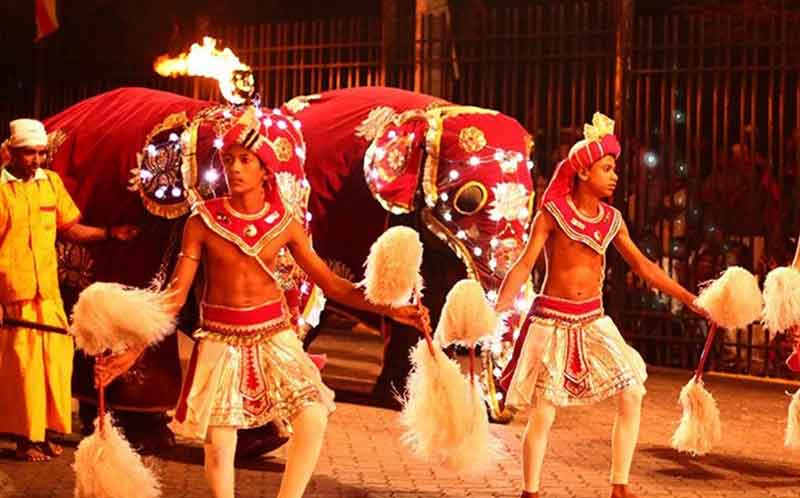
Sri Lanka has a unique culture formed by history, religion, and ethnic origin influenced by centuries past. Familiarizing oneself with the cultures would make visiting Sri Lanka a more fantastic experience.
1. Religious and Ethnic Diversity
The population in Sri Lanka is highly diverse and comprises Sinhalese, Tamil, Muslim, and Burgher people. Among the main religions, people can find Buddhism, Hinduism, Islam, and Christianity; therefore, Sri Lanka’s territory can be considered a unique multi-religious country. Tourists should be conscious and participate in religious practices and festivals in temples, mosques, and other places.
2. Respect at Religious Sites
During travel deviations, there’s a culture of dressing decently when covering religious grounds in Kandy’s Temple of the Tooth or ancient city of Polonnaruwa ruins. Both men and women should wear bare shoulders and knees; visitors must take off their shoes before entering the shrine room, and one should never put his back in formation to worship Buddha. These are respectful gestures and conform to the area norms.
3. Festivals and Traditions
Sri Lanka has colorful festivals, including Vesak, which emphasizes the life of Lord Buddha, and the Sinhalese and Tamil New Year. Attending those events gives an understanding of the island’s culture and people’s unity or togetherness spirit.
4. Language and Communication
Alphabets Sinhala and Tamil are the official languages, but English is quite well understood by local people, especially in tourist sectors. This is why the beauty of learning simple phrases such as “Ayubowan,” which means hello, or “Nandri,” which means thank you in Tamil, will go a long way in winning people’s hearts.
5. Warm Hospitality
People in Sri Lanka are considered to be hospitable, making them generous. Tea or food, usually snacks, is another sign of acceptance of what has been offered.
Understanding those cultural differences makes the trip to Sri Lanka a true life enrichment process that allows you to make real friends.
9. Food and Drink
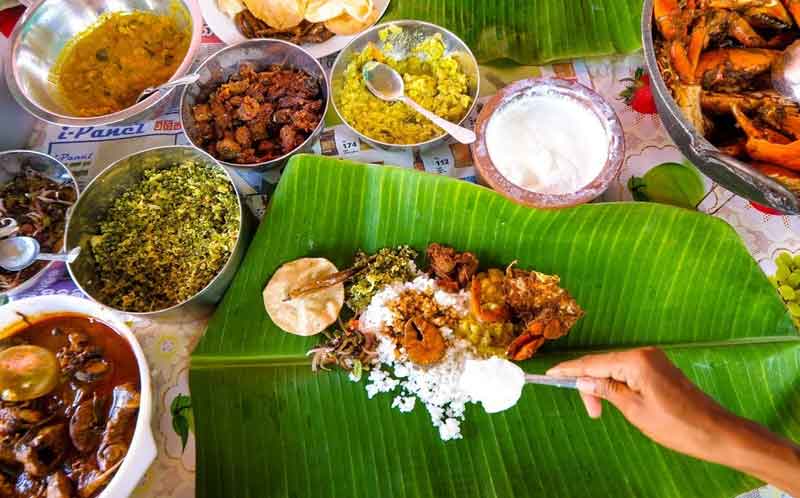
When visiting Sri Lanka, one should definitely get acquainted with its food and beverages. Sri Lankan food is very delicious because of its rich spice, fresh products, and local cooking methods. Good wines and beers aside, one can feast on a symphony of tastes as the island specializes in spices for a curry dish or a chilled drink.
1. Iconic Dishes to Try
Rice and Curry: The Sri Lankan famous meal, rice and curry, is accompanied by dishes such as dhal or lentils, vegetables, fish or meat, and sambols, which are spicy side dishes. The vibrant flavors and spices make this a dish that you must try.
Hoppers: A type of breakfast dish famous in the region, it is made from fermented rice flour and is bowl-shaped. They are just perfect on their own or toasted and topped with a poached egg and spicy sambols or curries.
Kottu Roti: Another popular street dish, kottu roti, is composed of a stir-fried confection of chopped flatbreads topped with vegetables, scrambled eggs, and the option of modest meat or seafood.
2. Popular Drinks
Ceylon Tea: Tea produced in Sri Lanka needs no introduction to the global market as it is one of the best in the world. A cup of Ceylon fresh tea, especially from an area such as Nuwara Eliya, is a special delicacy worth trying.
King Coconut Water: Common in most areas of the island, King Coconut Water is a natural and healthy beverage for summer consumption.
Toddy and Arrack: For a traditional and local source of alcohol, toddy, which is fermented palm sap, and arrack, which is distilled palm liquor, are available.
10. Wildlife and Nature
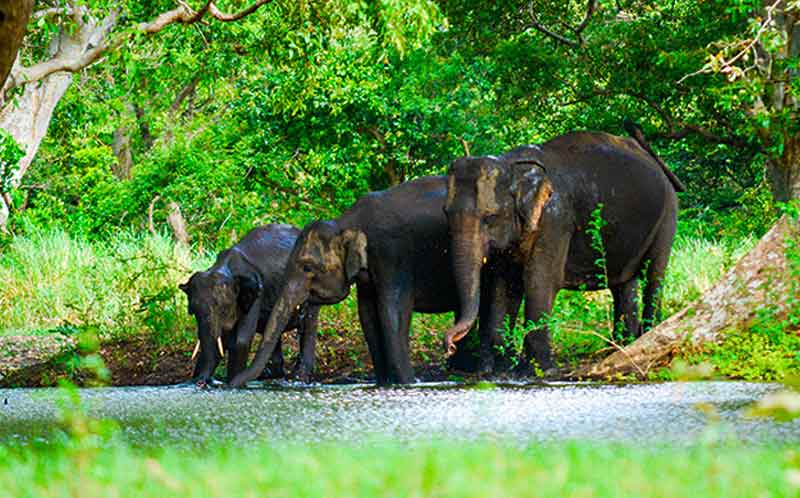
The island boasts itself for fauna and wildlife and acts like a natural park for many species that are preserved throughout the island. The island is home to an array of wildlife, including:
Yala National Park:
Yala National Park is one of the best-known wildlife parks in Sri Lanka, and it is particularly famous for leopard sightings. It also has elephants, crocodiles, and different types of birds that can be seen in the park.
Wilpattu National Park:
This is not as busy as Yala but fabulous for leopard, elephant spotting, and other animals.
Sinharaja Forest Reserve:
This is one of the few rainforest areas on the UNESCO list of world heritage sites; unique examples of flora and fauna inhabit it.
While on a wildlife tour in Sri Lanka, especially in the natural reserves, you should respect the animals and stick to park rules.
11. Safety Tips
Sri Lanka is generally a safe destination for travelers, but like any other country, it’s essential to take precautions:
- Avoid Demonstrations: Protests are sometimes possible on some streets in big cities; therefore, they should be avoided.
- Health Precautions: Take medicines that are necessary for the trip and a first aid box. Consuming tap water and foods from street vendors should be avoided since they may result in a stomach problem.
- Valuables: Do not take the valuables with you when moving around, and do not travel around with huge sums of money.
Mostly, Sri Lanka can be considered a safe country for tourists who will be cautious and ready for the climate in the country.
12. Language and Communication
While the two main languages of Sri Lanka are Sinhala and Tamil, English is also used frequently, particularly in regions such as tourist zones or largest cities. When going on a trip to Sri Lanka, basic knowledge of Sinhala or Tamil increases the culture’s recognition level.
Hello: ”Ayubowan” (Sinhala) , “Vanakkam” (Tamil)
Thank you. In Sinhala – “Bohoma Istuti” In Tamil, “Nandri”
English is well understood in tourism businesses, but it would be nice to know at least some words to communicate with the people.
13. Local Festivals
Sri Lanka celebrates a range of festivals throughout the year, showcasing its rich cultural heritage:
- Sinhala and Tamil New Year: This is the most popular festival in Sri Lanka, usually held in April.
- Esala Perahera (Kandy): A striking spectacle of decorated elephants, dancers, and fire eaters which takes place in Kandy in August each year.
- Deepavali: The Tamil community also celebrates the Hindu festival of lights, which is widely known as the light of fireworks and sweets.
Festivals are mostly the best times when it is possible to get the impression of how people live and what traditions Sri Lanka has.
14. Travel Packing
Luggage-wise, it is advisable to pack light and formal wear because the weather in Sri Lanka is usually warm. Some packing essentials include:
- Comfortable Shoes: You’ll spend most of your time walking, especially when you’re moving around the temples or going for a trek.
- Sunscreen and Hat: In this tropical country of Sri Lanka, the weather can be very hot sometimes, so make sure to use sunscreen to prevent sunburn.
- Insect Repellent: Some are very common, especially around the beach and jungle areas.
- Camera: Beautiful sites that are perfect for photography are something one should expect in Sri Lanka. Therefore, ensure to pack your camera.
It is recommended that travelers pack according to the climatic conditions prevailing in those areas, the kind of activities they intend to undertake, and the part of the world that they will be visiting.
15. How to Reach from India
If you are planning to visit Sri Lanka from India, you will find several viable ways to travel depending on personal interest and the availability of funds. The quickest and probably the most widely used mode of transport to Sri Lanka is by air. Today, direct flights from leading Indian cities such as Chennai, Mumbai, Delhi, Bengaluru, and Hyderabad are available at Bandaranaike International Airport in Colombo. Sri Lankan Airlines, Air India, and Indigo are some airlines that frequently have flights to Kanyakumari, where air travel is the preferred mode.
Other modes of transport are also open for use but are not as common as flights, such as a ferry service between Tamil Nadu and Sri Lanka. This can be an adventurous cruise and an excellent way of cruising through the Palk Strait. Since Sri Lanka is in the neighborhood and well connected to India, knowing how to travel to Sri Lanka from India is not a complex issue, and it is the perfect entry point to this amazing country.
16. Environmental Awareness
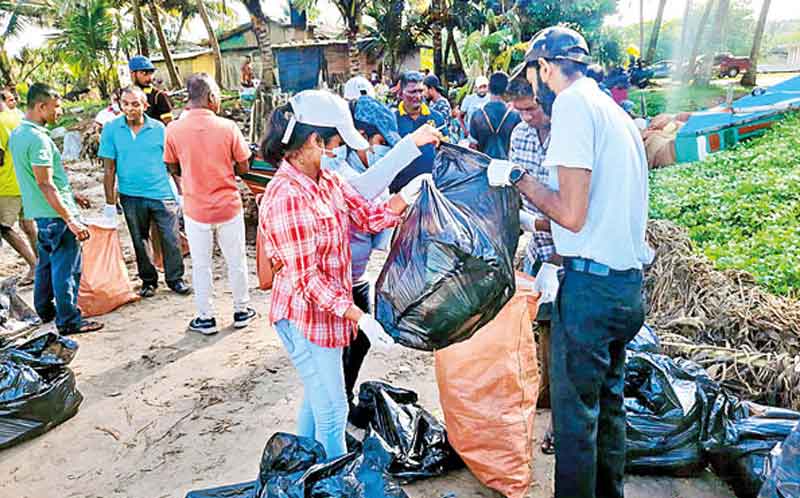
Sri Lanka has gorgeous greenery and attractive coastlines, and the population is highly interested in wildlife conservation. Tourists should, however, be conscious about their environment in Sri Lanka. Do not throw trash on the islands; use environmentally friendly products to conserve the island’s habitats. Do not disturb nature’s creatures by frightening or feeding them; this is especially evident in parks such as Yala and Wilpattu. Promote development-friendly tourism through making the right choices in selecting environmentally friendly places to stay and Green Tourist Guides. Thus, by embracing these practices, you will support the conservation of scenic features of Sri Lanka for the enjoyment of future generations.
17. Internet and Connectivity
Indeed, the internet services accommodated during their visit to Sri Lanka make connecting easy since the country boasts good mobile network coverage. 4G is available in large cities and tourist resorts, and Wi-Fi is available in hotels, cafeterias, and restaurants.
We recommend sourcing a local SIM card at the airport if you plan to connect with a local provider. Buying data from service providers such as Dialog, Mobitel, and Airtel is cheap, and the firms provide excellent networks. This helps ensure you can find your way, communicate your experiences when you’re moving, and share it with others easily. That way, you can have fun discovering places of interest in Sri Lanka with the possibility of constantly communicating with people at home or abroad.
18. Understanding Local Customs
Cultural etiquette is essential knowledge when a person is visiting Sri Lanka and would like to make it enjoyable. Sri Lankans are conservative about dressing modestly, especially when visiting sacred places. It is also important not to wear shoes and headgear indoors, especially in holy places; pointing at someone or something with your index finger is also considered rude. Kissing and holding hands are discouraged in traditional settings. Always take a bow before elders and exchange things using the right hand only. Holding a small traditional cap or wearing a T-shirt with a picture of local conventional dances reveals a good attitude, though knowing a couple of local phrases, for instance, ‘Ayubowan’ meaning ‘Welcome,’ poses a good gesture towards the locals.
19. Emergency Numbers
It is always wise to carry some essential emergency numbers with you in Sri Lanka so that there is no tension in the middle of your adventurous journey. Here are the important numbers to note:
- Police: Call 119 if you require assistance from the police in any incident
- Ambulance and Medical Services: In an emergency, use the telephone number 110 for an ambulance.
- Fire Services: The fire emergency number is 111.
- Tourist Police: For tourists, you may call 1912 for help, whether about safety issues or otherwise.
- General Emergency Hotline: In case of any emergency and when the emergency response is needed, call 112.
Having these numbers on your mobile phone contact list will be helpful while you are moving around Sri Lanka.
Conclusion
Sri Lanka is the pearl of the Indian Ocean and is known for its rich cultural sites, beautiful landscapes, and warm welcome. From rich history and culture, ranging from temples to tea gardens, refreshing sea and sun experiences such as beautiful sandy beaches, to people’s lively, colorful, and joyful celebrations, there is absolutely everything in Sri Lanka. Attention to these policies, knowledge of visas, and staying in touch with communication facilities will also help improve the overall travel expeditions.
However, appreciation of the environment and acquiescence to the many cultures will enable you to capture the spirit of this remarkable place. Though traveling to Sri Lanka may not be the easiest thing to plan and accomplish, with careful planning, you are sure to make your adventure a very memorable and educational one.

